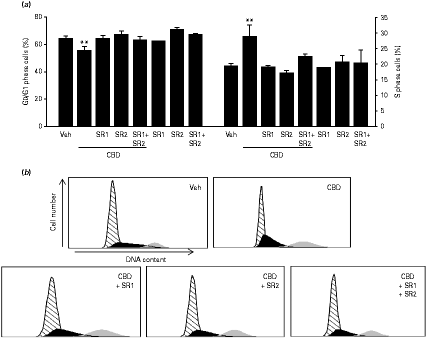Cannabidiol (CBD) promotes neural progenitor cell cycle progression at the G1/S transition in a CB1 and CB2 cannabinoid receptor-dependent manner. (a, b) HiB5 cells were treated with CBD (100 nm), alone or in the presence of SR141716 or SR144528 (SR1 or SR2, 2 µm) and cell cycle analysis was performed after DNA content quantification by flow cytometry. (a) The relative fraction of cells in the Go/G1 and S phases is shown. (b) A representative DNA histogram of each condition is shown. Results correspond to three independent experiments. One-way analysis of variance followed by Duncan's post hoc test, ** p < 0.01 vs. vehicle (Veh)-treated cells.
